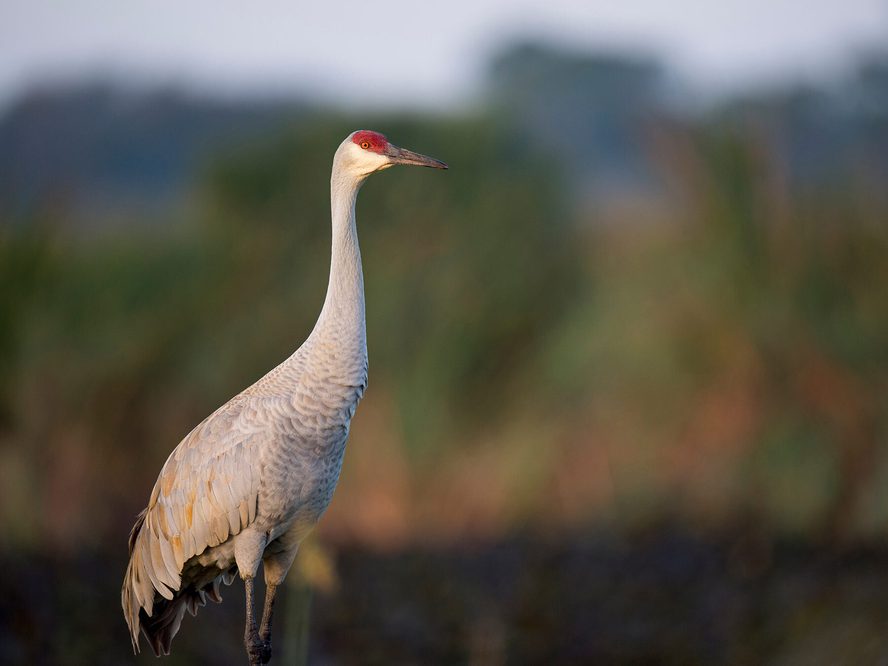Jump to Section
Juvenile Sandhill Cranes (Identification Guide with Pictures)
Last updated: 20 February 2023
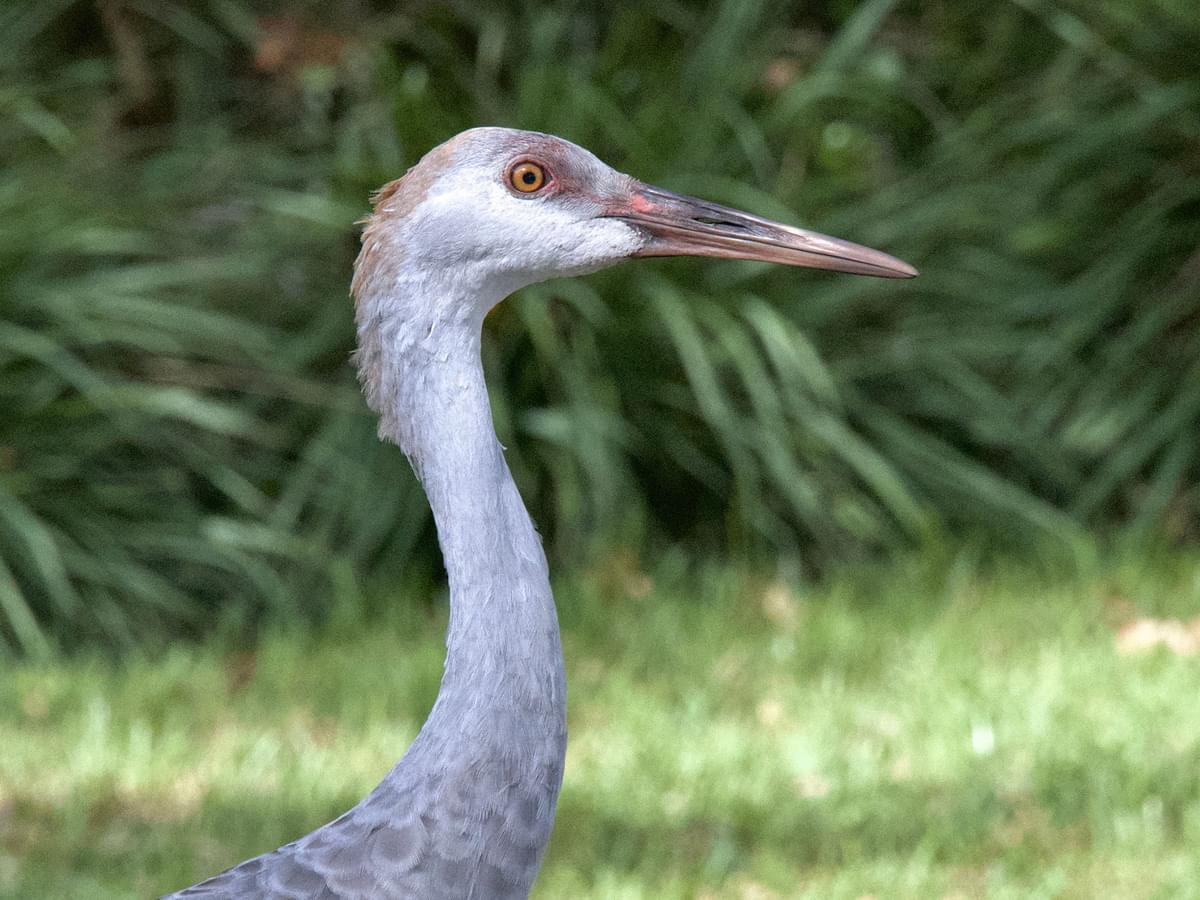
Tall waders with broad wings and a distinctive red crown, sandhill cranes (Antigone canadensis) are a spectacular sight, gathering in large flocks during their annual migrations.
Juvenile sandhill cranes develop quickly after hatching, but do not reach their full adult size and mass until they reach between 10 and 12 months. Our guide to juvenile sandhill cranes looks at their development and bond with parents, so please read on if you’d like to find out more.
Juvenile sandhill cranes are rust-colored rather than having the gray-and-white plumage and red cap seen in adults. Young are born with a covering of golden down and are able to leave the nest and feed themselves within 24 hours of hatching.
Newly hatched sandhill cranes are able to walk (albeit a rather unstable wobble) and swim within as little as 8 hours. The ability to fly develops between 7 and 10 weeks.
Growth is rapid, with young reaching their full adult height and weight by the end of their first year, by which time their association with their parents will usually have ended. Although sandhill cranes may be fully-grown by the end of their first year, they do not breed for the first time until they are between 2 and 3 years old.
To find out more about what juvenile sandhill cranes look like, what they eat, and how long they remain with their parents, please keep reading.
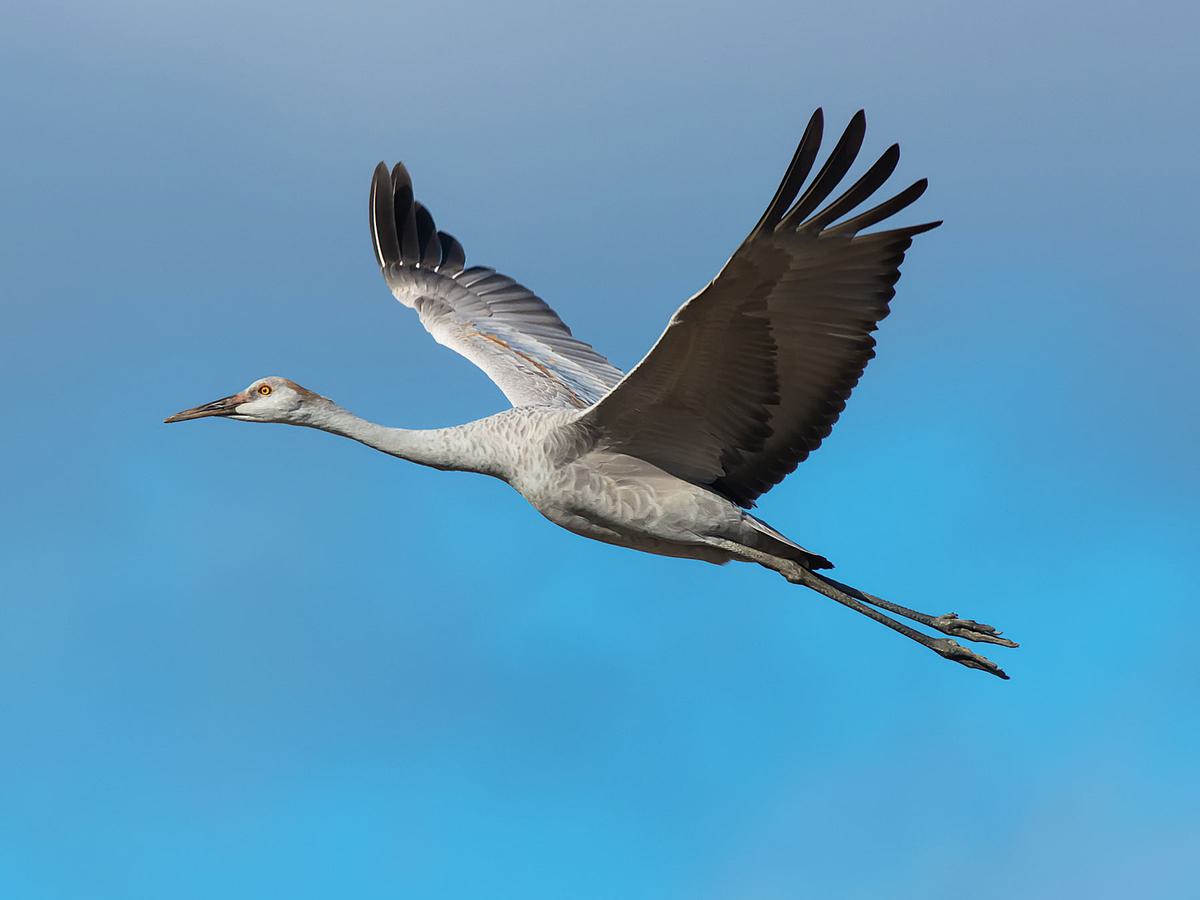
Close up of a juvenile Sandhill Crane in flight
What do juvenile Sandhill Cranes look like?
Juvenile sandhill cranes can be distinguished from adults by a number of features, including size, plumage on the head and body, eye color, bill color and voice. The starkest difference between mature birds and juveniles of the species is the absence of the bright red scaly cap in young birds.
When they first hatch, young sandhill cranes are covered in a golden down, and have yellow legs and feet, mid-brown eyes, and a pink-orange bill. This initial down is replaced from 4 to 5 weeks after hatching, with full plumage developing from around 8 weeks onwards. Body and wing feathers are a rust color, which lightens to a paler grayish-white on their necks and faces.

A pair of Sandhill Crane chicks
By the time they reach the end of their first year, their eyes have become more yellow in color, and by 2 years of age, they have turned to the brighter orange-scarlet shade seen in adults. Their bills also darken to a deep gray that fades to an olive color at the base.
The distinctive red cap seen on the crown of adult sandhill cranes is not a patch of feathers, but instead an area of scaly, exposed skin that is used to display aggression when defending a nesting territory.
Young sandhill cranes’ foreheads are covered in gray feathers, which gradually recede by the time they are between 2 and 3.
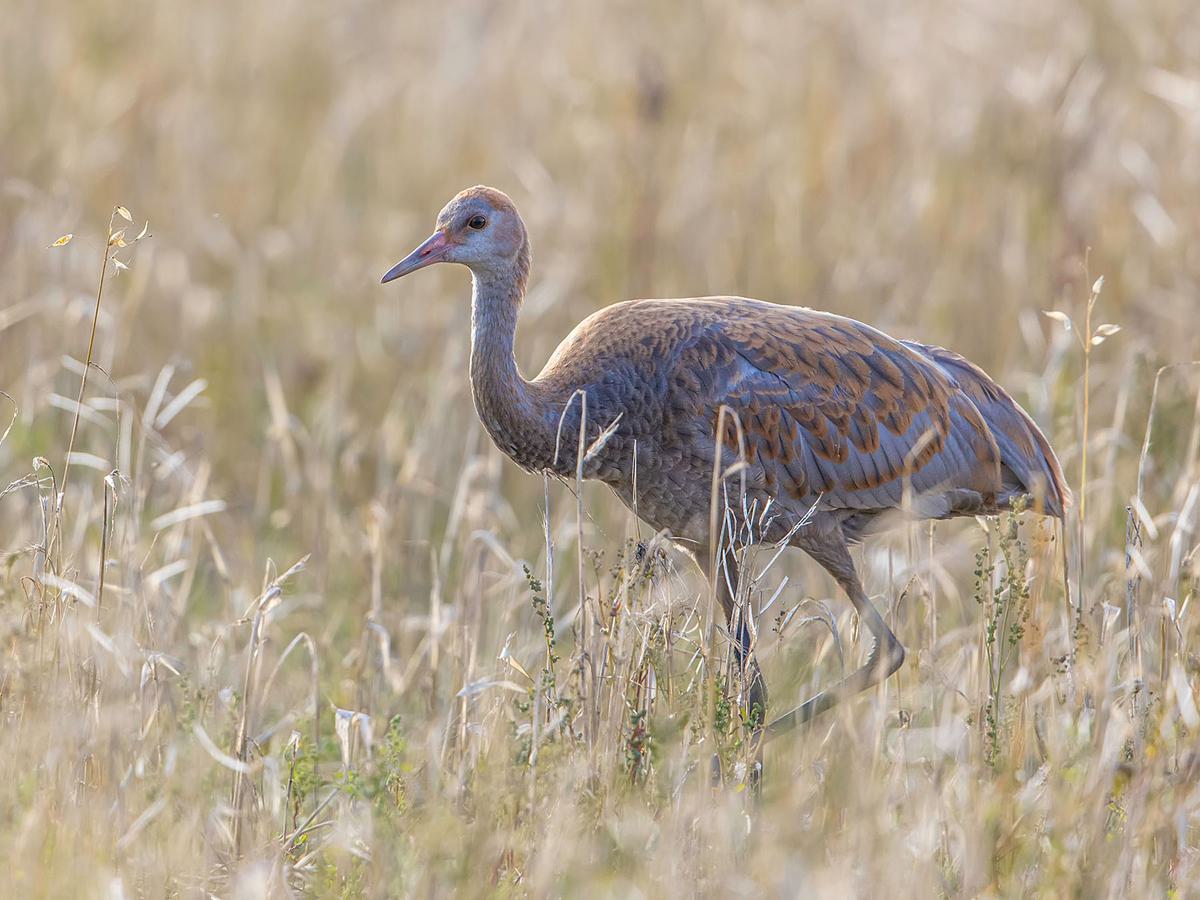
Juvenile Sandhill Crane
How big are juvenile Sandhill Cranes?
On hatching, sandhill crane chicks weigh around 114 g (0.25 lb). Growth is rapid, with birds increasing in mass by between 14 and 17 times by the time they reach 35 days. At between 10 and 12 months, young sandhill cranes weigh the same as adults.
When do juvenile Sandhill Cranes molt?
Between four and five weeks after hatching, sandhill crane chicks undergo their first molt, with their initial golden down being gradually replaced by a full set of feathers.
By 8 to 10 weeks, adult feathers have almost fully erupted, but some down remains on the head, neck and belly.
This final down is lost by around 13 to 14 weeks, giving juveniles an all-over rusty brown plumage, with lighter gray coloring on their necks and heads.
During the first fall and winter after hatching, the rusty buff-brown immature plumage is gradually replaced with the recognizable gray seen in adults. By the time they reach around 18 months, 83 percent of juvenile sandhill cranes no longer have any brown feathers.

Adult and juvenile Sandhill crane - juveniles lack the red patch on the head
What do juvenile Sandhill Cranes eat?
For the first 10 days after hatching, young sandhill cranes are fed by their parents, and follow the same omnivorous diet as adult birds: earthworms, small invertebrates, berries, insects, seeds and small aquatic animals. Larger items may be broken into smaller pieces by the adults before being fed to the young.
Independent foraging soon begins and increases as juvenile sandhill cranes grow in size – young birds spend up to 25 percent more time foraging than adults. Grain, grit, and seeds feature heavily in the diet of juvenile sandhill cranes heading towards independence.
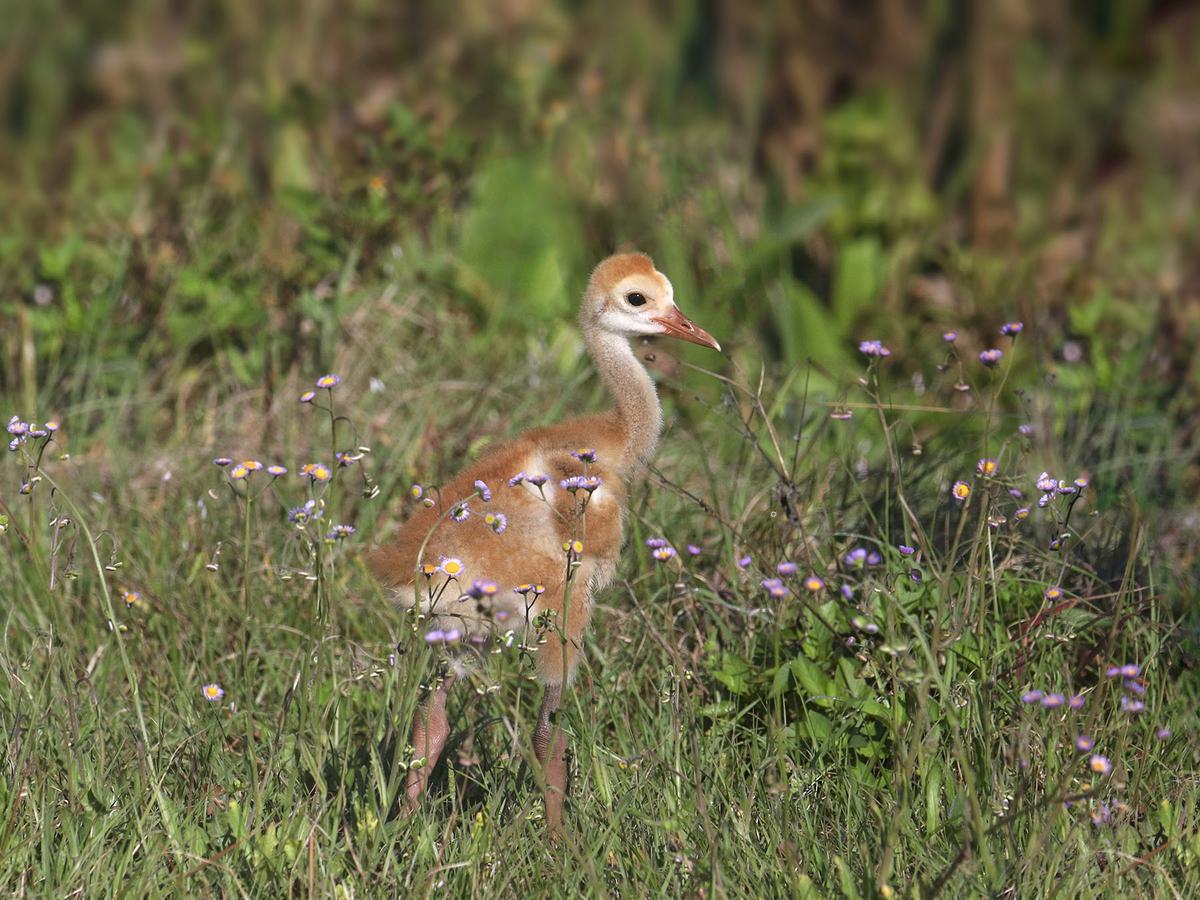
Immature Sandhill crane walking in the grass
How long does Sandhill Crane juvenile plumage last?
By the time they reach around 18 months, most juvenile sandhill cranes will have lost their brownish immature plumage and resemble fully grown adult birds.
Molting of the juvenile plumage usually takes place during the first fall and winter after hatching. Young birds reach adult size by around 10 to 12 months, and by the time they reach 2 to 3 years, they cannot be told apart from adult birds.

A young, fluffy Sandhill crane with their parent
How long do juvenile Sandhill Cranes stay with their parents?
Young sandhill cranes remain with their parents for much of the first year after hatching, leaving around one to two months before the parents start their next brood in the subsequent breeding season.
By the time they reach 12 months, they will no longer associate with their parents and will join non breeding flocks with other juveniles until they are ready to form pairs, which usually happens at between 2 and 7 years old.
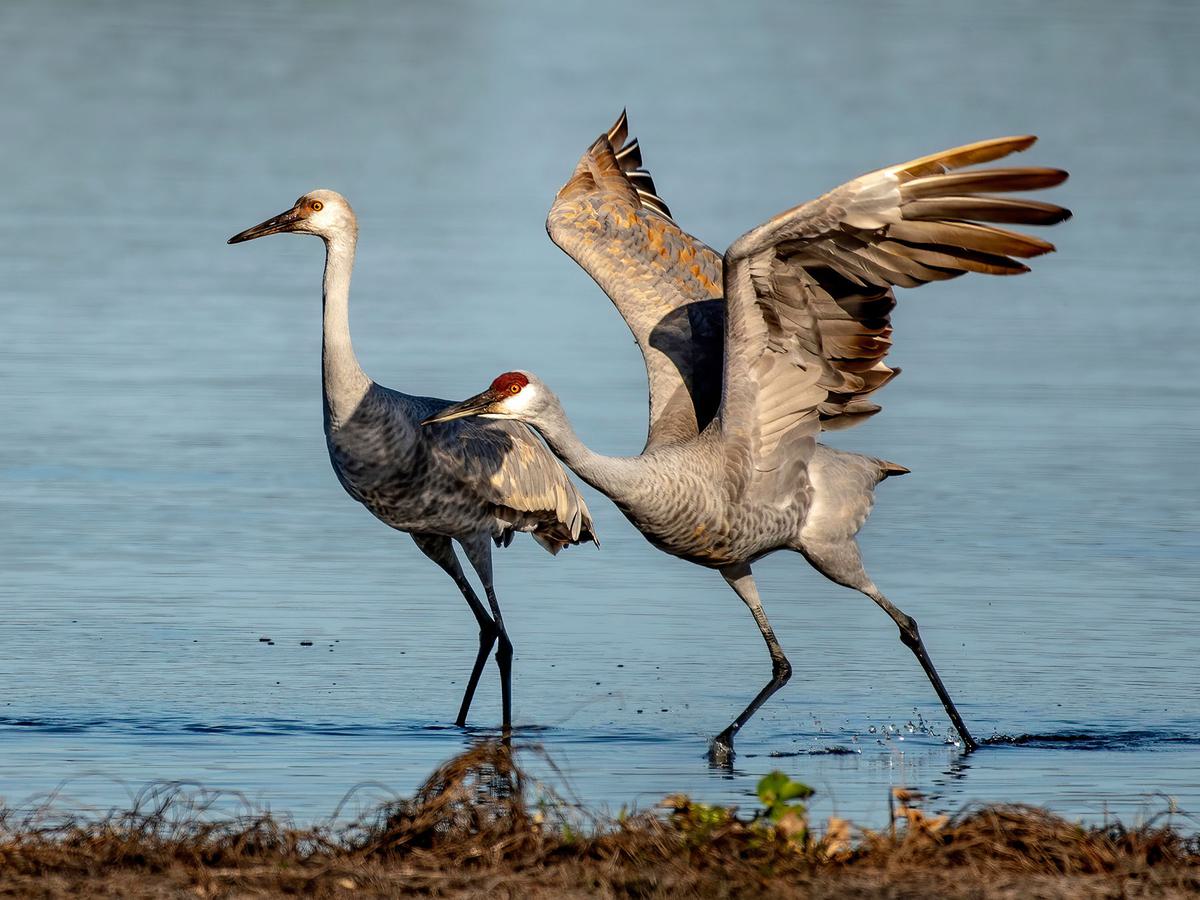
Juvenile and adult Sandhill cranes taking off from the shore
Other differences between juveniles and adults
By listening out for vocalizations among groups of sandhill cranes, three distinct sounds will let you know whether juvenile birds are among a flock.
On hatching, sandhill crane chicks make a pipping call, consisting of trills and peeps. This call can even be heard before the young birds emerge from the eggs.
Also heard only in juvenile sandhill cranes is a high-pitched contact call, something of a yelp, in contrast to the purring contact call used by adult cranes.
The third type of call that is unique to young sandhill cranes is a rapid stress call. By the time juvenile sandhill cranes have reached around 10 months, they are able to make adult vocalizations, with the stress call replaced by the well-known ‘guard rattle’ associated with fully mature birds.
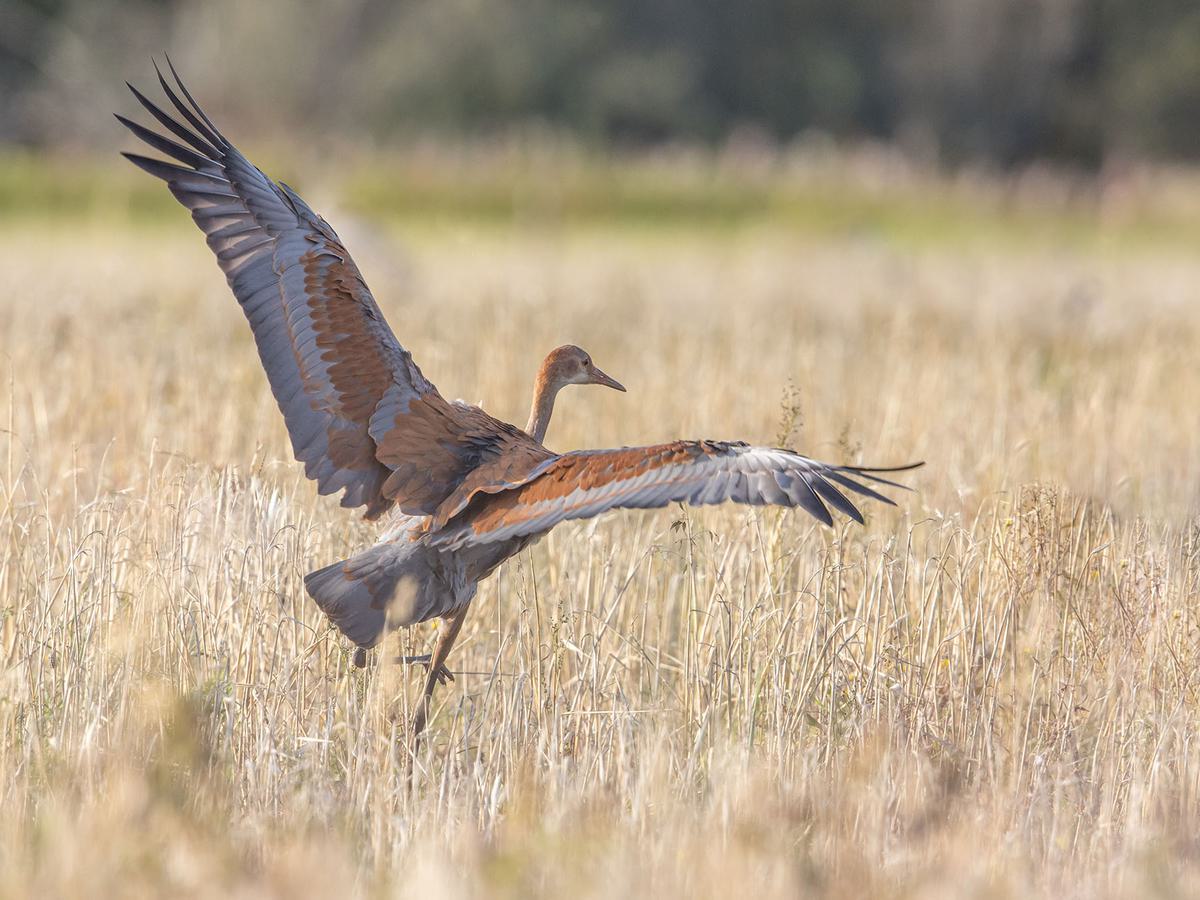
Juvenile Sandhill crane about to take off
Will juvenile Sandhill Crane visit their parents?
Once they no longer need to be supported or protected by their parents, juvenile sandhill cranes will join their peers to form loose flocks, rather than continuing to live within their parents’ territories.
By the time sandhill cranes gain independence, their parents will likely have started incubating another batch of eggs, and juveniles may even have to be driven off the territory by the brooding parents.
Separation may have already occurred during spring migration, in which case, young cranes and their parents will usually not deliberately cross paths again.
On this page
- What do juvenile Sandhill Cranes look like?
- How big are juvenile Sandhill Cranes?
- When do juvenile Sandhill Cranes molt?
- What do juvenile Sandhill Cranes eat?
- How long does Sandhill Crane juvenile plumage last?
- How long do juvenile Sandhill Cranes stay with their parents?
- Other differences between juveniles and adults
- Will juvenile Sandhill Crane visit their parents?
